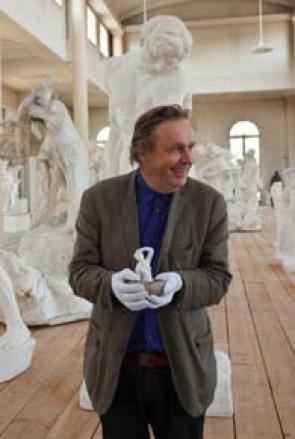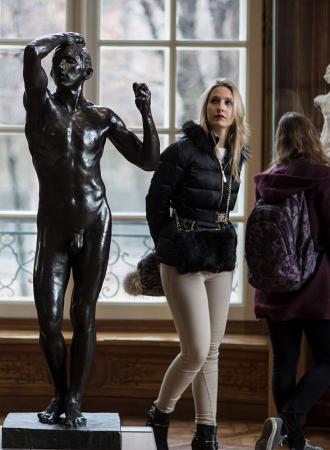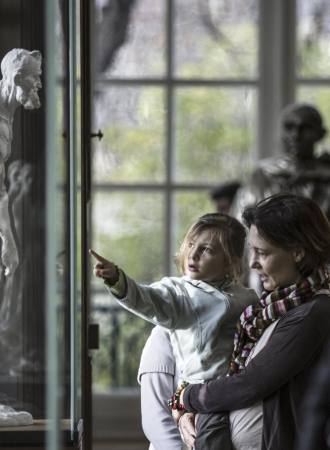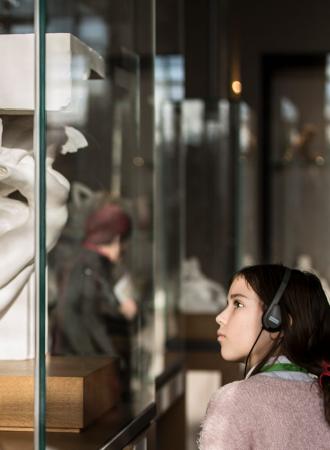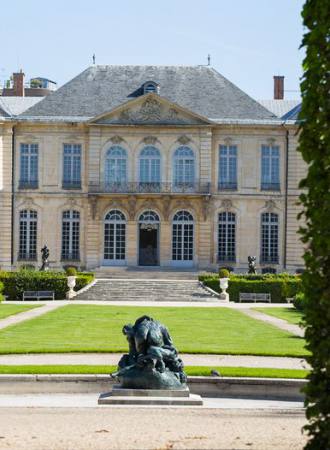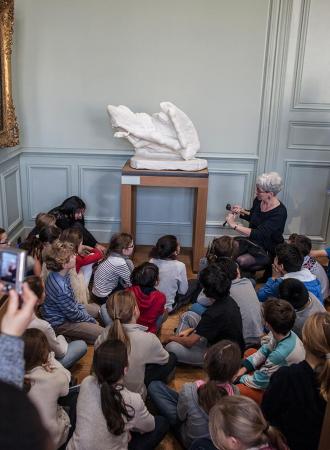Search the site
Jean-Christophe Bailly
A Very Small Abduction
Regarding Rodin, I was especially familiar with the grand forms and a powerfully asserted syntax, linked together in a system of presentation that is that of the work or the masterpiece. But what I learned to recognize, as I continued, are the thousands of objects (fragments of his own sculptures or antiques he had collected) Rodin kept, apart from his work, like a reserve he could readily consult, or like the lexicon of a wondrous language he discovered as he went along.
What he called these abattis – the giblets or, figuratively, offal –, the fragments, and the antiques, socles and pedestals, literally made up a population that existed and, scattered here and there, awaited its hour in the drawers and on the shelves of the reserves at Meudon, casting new light on the work, of which some of the assemblages produced are stunning testimony. Reflecting upon all of that, and trying to understand the sense of this work in progress, interrupted, but as though still latent, I mentioned Rodin's “Atlantis” in a chapter of my book Le Dépaysement, written during my residency. But now, through the choice of objects rather than words, I wanted to retain some signs of this buried continent, that drift towards us and land in an ephemeral but by no means random manner, in this showcase, so they may write their own score.
It was compellingly necessary to display there one of these hasty and inspired assemblages, at once marvellously casual and definitive, Rodin's way of signifying his abandonment of the idea of a monumental accomplishment for the minutes of a transhistoric rendez-vous he preferred. Thus this small, damaged nude, ensconced in an antique coupe that, in an almost offhand way, is like an absolute, both elegant and rustic, or the equivalent, in the form of a strange figurine that has escaped to life, of a Degas bather – the focal point to which I associated other elements from then on – pieces that were detached or not yet joined to a latent assemblage, suspended as such before the visitors.
In short, a little collection, extracted from the grand one, one in which it was important to me that the provenances as well as the scale work in different directions. For example, a large Roman arm that seems to have played with three little heads of Egyptian cats that appear to have rolled away from it like bronze dice. Or, still another example, a hand holding a lock of hair combined with a bent right arm that has come from another body, both of them sculpted by Rodin, confronted by the head of a Greek satyr mounted on a little socle of onyx, this head then becoming a point within the possible evolutions, a point that could become a central viewing point, a concentrated round mass placed at the center of movements that are bridges, translations. This is exactly like what Rodin sensed and meant in his words, “a woman combing her hair fills the sky with her gesture” – the sky that I needed there too, surprisingly, as a supporting surface, like that which, without depth, makes connection and gliding, a choreography and clouds, possible; hence this stormy sky in the forest of Soignes, a little oil on cardboard, a sort of a window the artist has opened, upon his youth.
As one can see, with so few objects, we have already touched upon immensity. Perhaps the real meaning of the showcase, thus conceived, is actually there, in bypassing the monumental, and in the idea that a work of art, however famous, is always in progress and can be revisited, re-examined, ad infinitum. If possible in new, even uncertain ways – paths the viewer sets off on alone rather than great ceremonies where the feeling of being part of an appreciative collective overwhelms the secret and faltering quality of the solitary beholder. That is also why I chose to present this showcase in a corner of the museum that is a bit out of the way.
More informations
Inaugurated in 2010-2011 by the poet Jean-Christophe Bailly, the first residence of an artist at the Musée Rodin demonstrates a willing openness, rooted in a patrimonial inheritage. Beyond the legitimate place of creators within this artist’s museum and the museum’s own desire to be fully of its times in the relations it develops with its contemporaries, the principle of the artist-in-residence here stems from another memory, the old, traditional one of hospitality. Etymologically coming from both words “ostel” (hotel) and “hospitale” (guest house), the Hotel Biron is an appropriate place to revisit a tradition, characterized in French by the double meaning of the word hôte – at once he who welcomes and he who is welcomed. The word hospitality carries on all its nobility as well as part of the ambiguity implied in the risk of an inversion of its roles and attributes. In that respect, Auguste Rodin plays indeed for the Hotel Biron the role of an emblematic “hôte”: first of all a guest in 1908, when he and some other artists settled into the empty Hotel, he became the host later on, with the creation of his eponymic museum.
Jean-Christophe Bailly writer’s residency takes place in another temporality and on a different scale; it has been punctuated by a few specific actions closely related to his own work of writing, philosophical endeavors and interpretation of works of art. The showcase, practically hidden away in the room dedicated by the museum to Les Bourgeois de Calais, one of the writer’s favorite works, is one of these actions. Its impact, at once intimate and universal, constitutes a really singular answer to the museum’s wish for a reappraisal of Rodin’s work. The indirect result is that these few treasures gathered by Bailly, his secret stash, and Un tout petit rapt are ours from now on. The incitation is there and directed towards everyone, without regard for any kind of hierarchy, to practice or to have fun at conceiving and composing his or her own imaginary museum.
Noëlle Chabert
Curator
Noëlle Chabert, Musée Rodin
Exhibition(s) location(s)
Musée Rodin
19 Avenue Auguste Rodin, 92190 Meudon
Dates
Du 15 novembre au 31 décembre 2011

